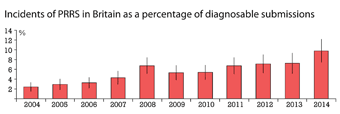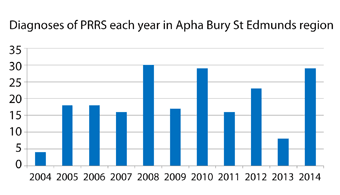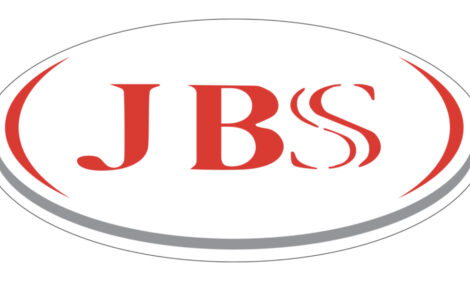



PRRS Diagnoses Highest for a Decade
UK - The increasing diversity of PRRS viruses in the British pig population makes it more likely available vaccines will not be able to fully protect against some field virus strains, warns the Animal and Plant Health Agency.According to its latest pig disease report, diagnoses of PRRS from October to December 2014 was the highest quarterly rate seen since 2004.
The issue was highlighted in the last issue of NPA newsletter Producer Brief when members were invited to provide feedback on whether they were finding PRRS vaccines as effective as they had been in the past.
Apha last month held a meeting with vets in East Anglia—where 60 per cent of its PRRS diagnoses were made last year—and plans further meetings at its Thirsk and Starcross veterinary investigation centres.
It is important, says Apha, that when PRRS virus is detected follow-up investigations are carried out to assess the clinical significance of the detected virus.
Disease due to PRRS in post-weaned pigs is often associated with other pathogens or disease conditions, in part reflecting the immunosuppressive nature of the virus.
Streptococcus suis, salmonellosis and pasteurellosis are the three most common diagnoses made with PRRS.








